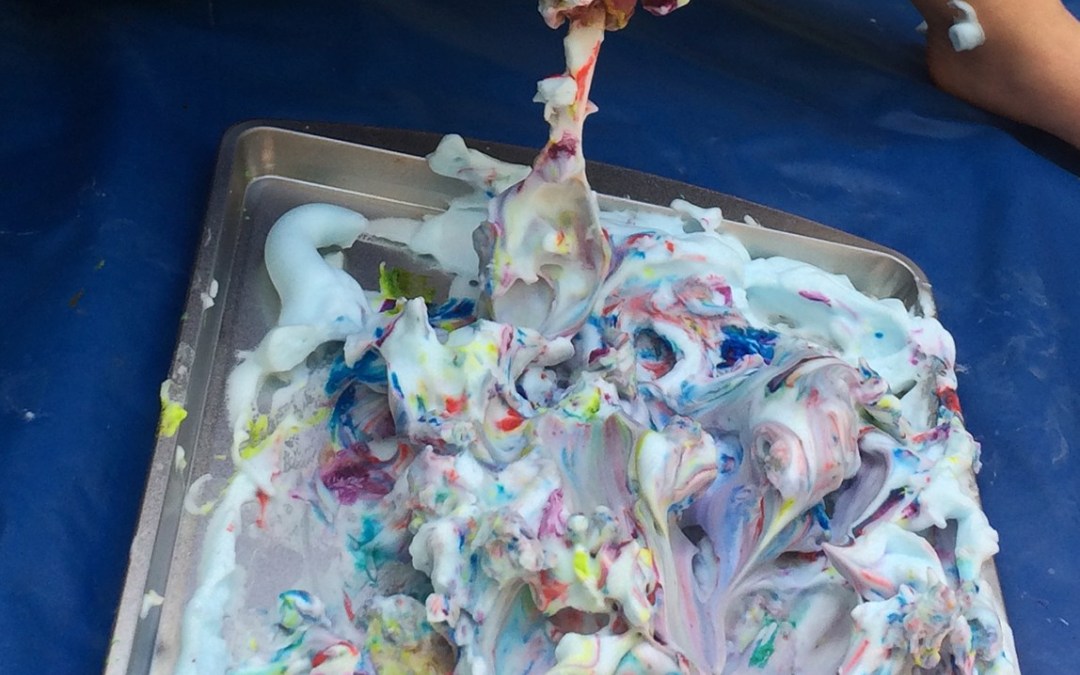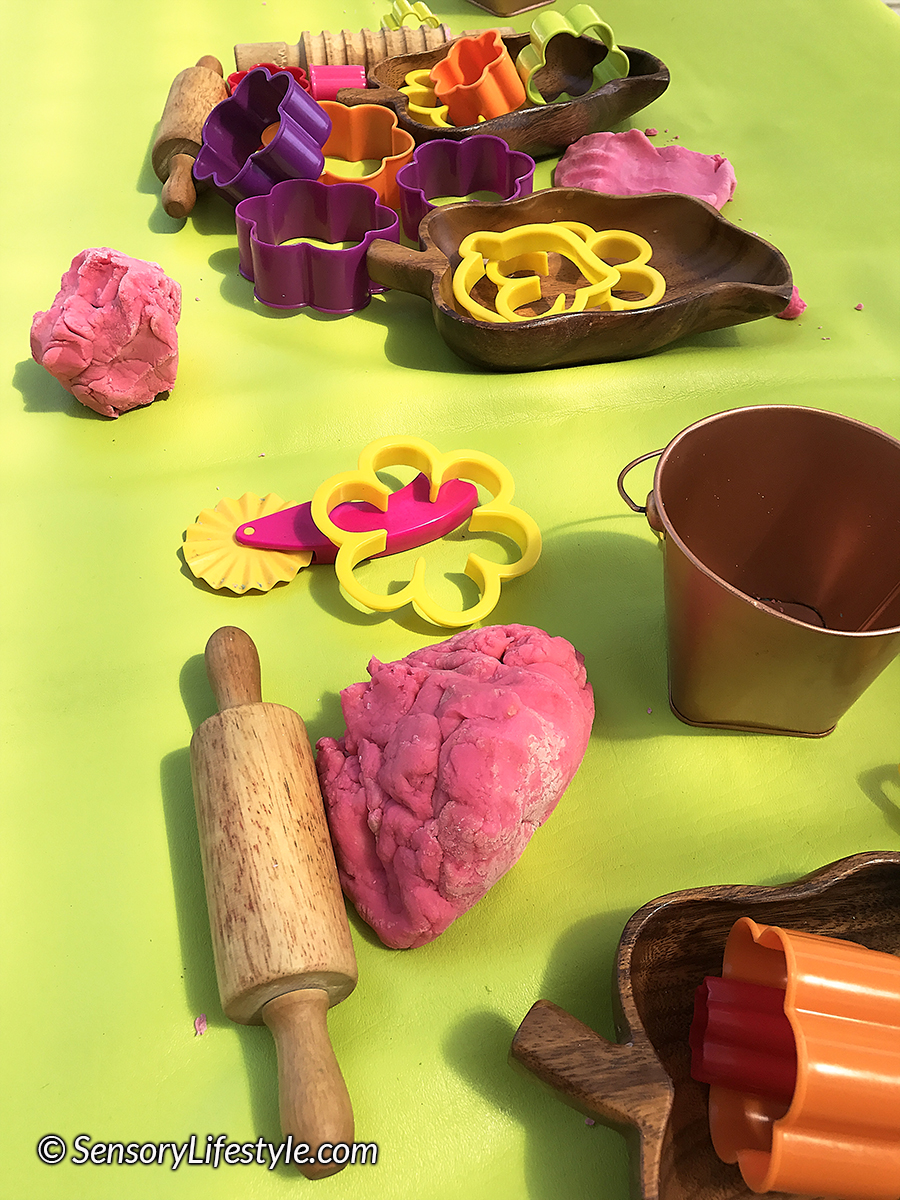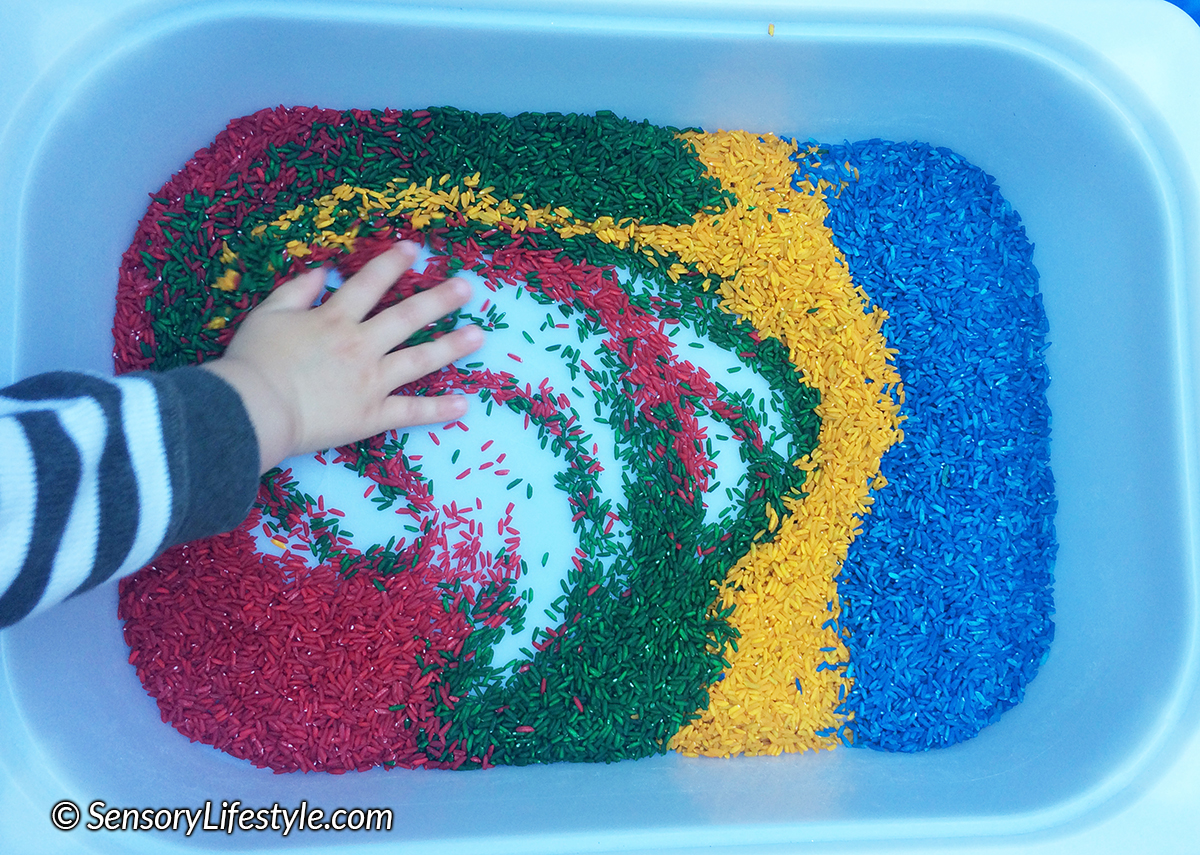Month 21: Top 10 Sensory Activities for 21 month toddler
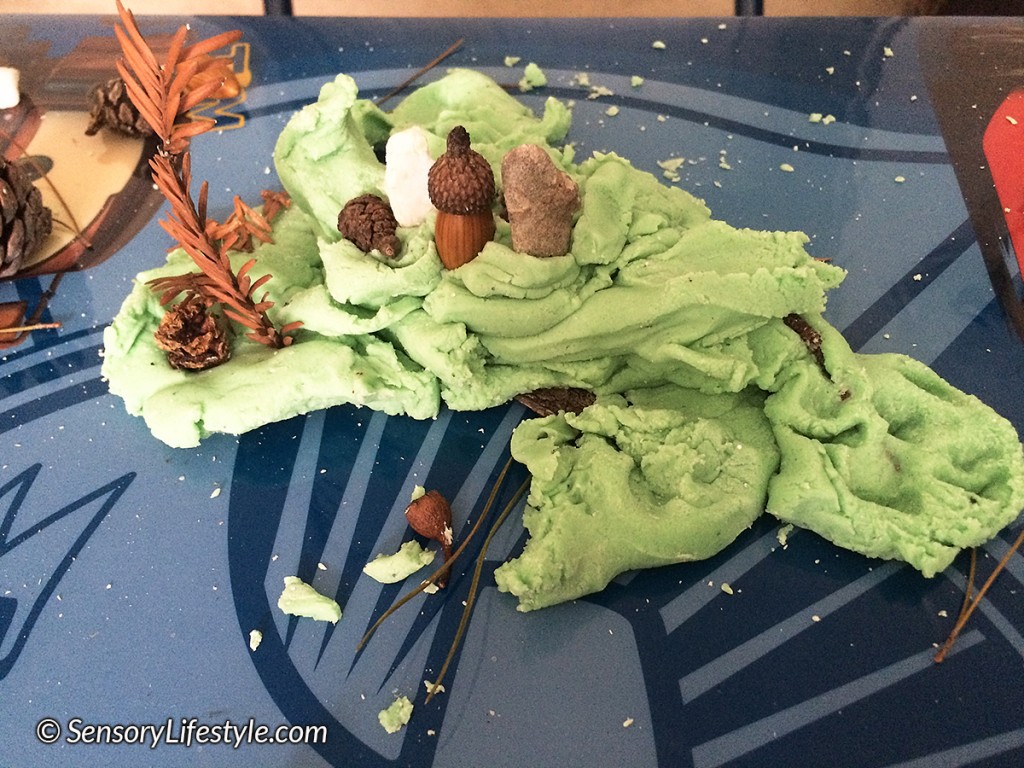
7 min read
As an Occupational Therapist and a Mom I have put together top activities for your 21 month old toddler. These activities will focus on strengthening their cognitive (mind) and motor (movement) development.
Leo once said “Simplicity is the ultimate sophistication.”. For the past few months I have been experimenting with different professions. Today I decided to be a painter, the Artissstttt type where I could express sophistication . You know, like Leo.. da Vinci.
I requested Mom to kickstart the whole process. We used my favorite fruit to make “paint”. Fruit paint. One small problem. The urge to satisfy my belly with that fruit was overwhelming, but I resisted.. for most part. By sheer coincidence, when mom wasn’t looking some of the raspberries and blackberries did a magic trick. Disappeared and reappeared inside my mouth. I’ve seen daddy pull this trick few times and get away with it 😉
Now the fruit paint was ready. I used my hands and a paintbrush to orchestra my masterpiece. In a rage of ecstasy I swiveled, I splashed, I smashed, I streaked and walla! It was done. Its true what Leo always said; Where the spirit does not work with the hand, there is no art.
Ok… enough of my rambling. Off to my next masterpiece.
Activities for your 21 month toddler
Below I have included my top 10 sensory activities for your 21-month toddler. As always, these activities have been tried and tested. Enjoy!
1. Painting with fruits & spices
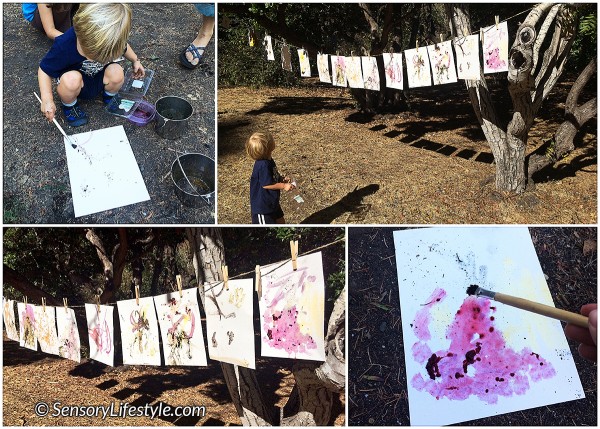
| Skills Developed | Targeted Senses |
|---|---|
| Fine motor skills, hand eye coordination & visual perception skills | Tactile & visual senses |
How to Play
This activity is taking a twist on the typical painting activities. Instead of using paints we can use fruits and spices. The goal is to choose a variety of fruits and spices that will create different colored paints.
Some examples can include turmeric, paprika, raspberries, blackberries, strawberries. And if you are outside you can even mix up some dirt with water for the brown color.
Once you choose your fruits & spices mix them up with water to get some color paints. With berries you will need to squish them up first. Don’t worry about tossing out the lumps, as it will give the painting some extra texture.
I would start to encourage the use of the paintbrush but if it gets too tricky they can always use their hands.
Have fun!
2. Nature color hunt
| Skills Developed | Targeted Senses |
|---|---|
| Grasping, hand eye coordination & visual perception skills | Visual & tactile senses |
How to Play
It doesn’t matter in what season you are playing outside, you can always find a variety of colors. White, green, red, purple, yellow, brown… Nature has it all. This is a great matching activity to teach your toddler about what things are similar and different.
Choose 2 or 3 nature objects of different colors. For example a green leaf, brown stick and a red flower. You can place them on a blanket or into individual containers. Walk around with your toddler to try and find those particular colors. It can include the same objects or different ones. Color is what we are interested in here. Teach them how to match those colors. Once they understand the rules you can ask them to find things of a particular color.
3. Play dough & nature
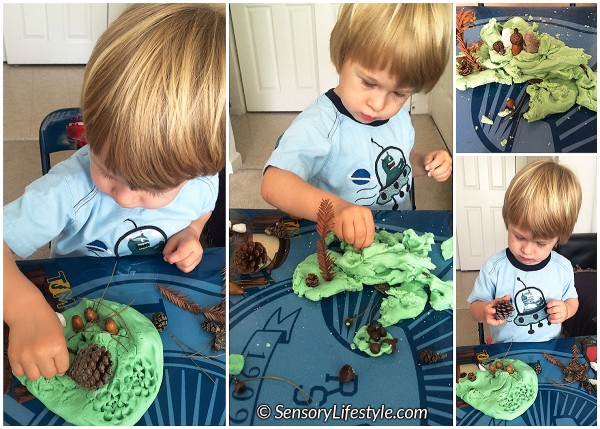
| Skills Developed | Targeted Senses |
|---|---|
| Fine motor skills, hand eye coordination & bilateral integration | Tactile, proprioceptive & visual senses |
How to Play
Any time I take out the play dough I let the child play around with it for a little while. While they are squeezing, pulling, pressing it they are strengthening their hands.
Then I introduce whatever I would like them to play with. During this activity I mix up the outdoors with the indoors. During one of your outdoor adventures take a note for your toddler to collect things from outdoors. It can include sticks, leaves, acorns, flowers, bark. Anything that isn’t too large.
Then let your toddler incorporate all those outdoor items with play dough.
They can:
- Stick it into play dough and create an art work.
- Make imprints.
- Play hide and seek with the objects. This can be completed by first hiding some items in the play dough. Then finding those items as they continue to pull and poke around while practicing their fine motor skills.
My favorite no–cook Play Dough Recipe
Ingredients
- 2 cups plain flour
- ½ cup salt
- 2 tablespoons of cream of tartar
- 2 tablespoons vegetable oil
- 1 ½ cups of boiling water
- Food coloring
What to do
- Mix flour, salt, cream of tartar and oil in a large mixing bowl
- In another bowl add water and mix it with food coloring
- Add both mixtures together
- Stir until combined (it still might be sticky)
- Allow it to rest
- Take it out of the bowl and knead it until the stickiness is gone
- If after a few minutes of kneading it’s still sticky then keep adding small amounts of flour. Keep adding until you have reached perfect play dough consistency.
4. Animal adventure
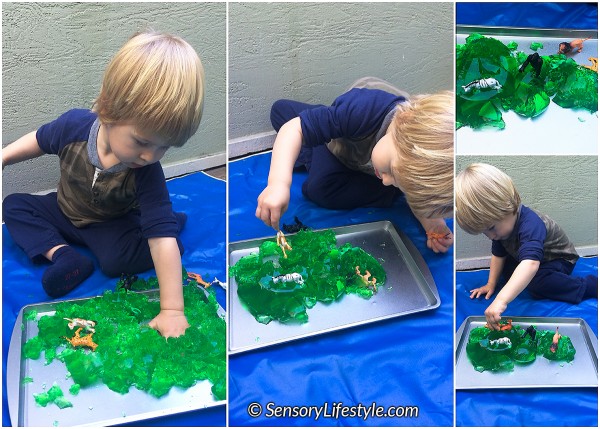
| Skills Developed | Targeted Senses |
|---|---|
| Hand eye coordination, bilateral skills & fine motor skills | Tactile & visual senses |
How to Play
This activity involves experiencing yet another texture, Jell-O. The toy animals go on an adventure to explore unknown lands (Jell-O).
Simply place Jell-O down on a flat surface and let your toddler explore this texture with their hands and toys.
5. Animal obstacle course
| Skills Developed | Targeted Senses |
|---|---|
| Balance, motor planning (ability to conceptualize, plan and carry out an unfamiliar task), body awareness, bilateral coordination, hand and shoulder strength, core strength, trunk control & visual skills | Proprioception, vestibular, tactile & visual senses |
How to Play
Obstacle courses are fantastic for developing a wide range of skills that involve many senses.
This month’s adventure involves animals. Choose a range of animals that your toddler is familiar with. It can include zoo or farm animals. If you get very creative you can even print out pictures of those animals so you can refer to them during the obstacle course.
Now create an obstacle course from items in your house such as pillows, cushions, blankets, tables, chairs or boxes. The obstacle course should provide your toddler with an opportunity to climb over things, under things, maybe do some crawling or jumping. As they navigate through the obstacle course you can ask them to pretend they are a specific animal. (This might include them imitating you). For example: “Let’s pretend we are elephants and stomp our feet” or “Now we are a dog, so lets crawl quickly through the tunnel” or “Now we are a monkey and we are going to climb up high onto this couch”.
6. Playground exploration
| Skills Developed | Targeted Senses |
|---|---|
| Fine motor skills, gross motor skills, motor planning skills, language skills & social skills | ALL senses |
How to Play
Playgrounds provide endless opportunities for children of all ages to explore all their senses. In my 3 part Playground series I explain in detail all the developmental benefits.
As your toddler observes and explores the playground they not only have the opportunity to work on interacting all their senses but they also have a chance to interact with other children. Through play they have many opportunities to work on their social and language skills. They can start getting familiar with some of the non-verbal cues of other children. They can learn how to share, take turns and figure out that throwing sand at another child is not the nicest idea.
So take your toddler out and give them the opportunity to learn!
7. Bubble storm
| Skills Developed | Targeted Senses |
|---|---|
| Motor planning (ability to conceptualize, plan and carry out an unfamiliar task), balance & hand eye coordination | Vestibular, visual, proprioceptive & tactile senses |
How to Play
To create a bubble storm you will need to blow lots of bubbles in the air. As they are floating all around encourage your toddler to pop them.
Strategies for popping:
- Pop with your fingers. This is great to encourage the separation of individual fingers, which are essential for many fine motor skills.
- Pop them by either catching them in-between their hands or by smashing them onto the floor or wall.
- Pop them with their feet. Great motivation to lift up those feet and work on those balance skills.
Once the storm settles you can also encourage them to blow some bubbles. Even if they can’t blow a bubble yet, any blowing activity is great for strengthening oral motor skills.
8. Wipeout
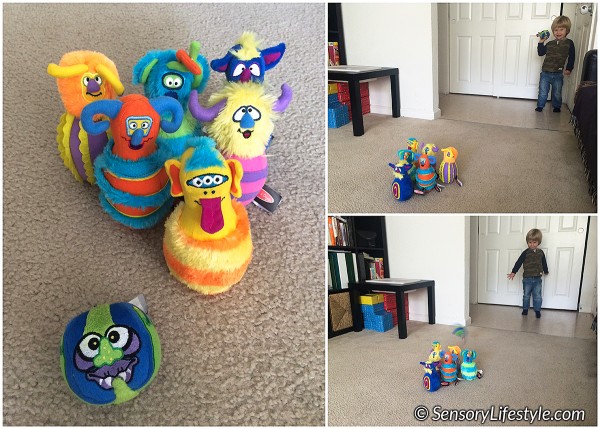
| Skills Developed | Targeted Senses |
|---|---|
| Motor planning (ability to conceptualize, plan and carry out an unfamiliar task) & hand eye coordination | Visual, proprioceptive & tactile senses |
How to Play
This game can also be known as a non-traditional bowling activity. You set up your bowling pins and then knock them down. For bowling pins you can use store bought bowling pins or simply empty plastic bottles. Now… when knocking down the pins there are no specific rules of where to stand, what ball to use or how to hold and throw the ball. The main goal is to wipe as many pins as possible.
To start, your toddler can use larger balls and stand closer to the pins. As they get more confident and successful you can change to a smaller ball and slowly start moving them further away.
Occupational Therapy Tip:
Sometimes our little toddlers have a hard time of knowing where to stand. If you want them to be shooting the pins from a particular distance try to use a marker to stand on. The marker can be a hula-hoop, carpet square or just a sheet of construction paper.
9. Fun with Blocks
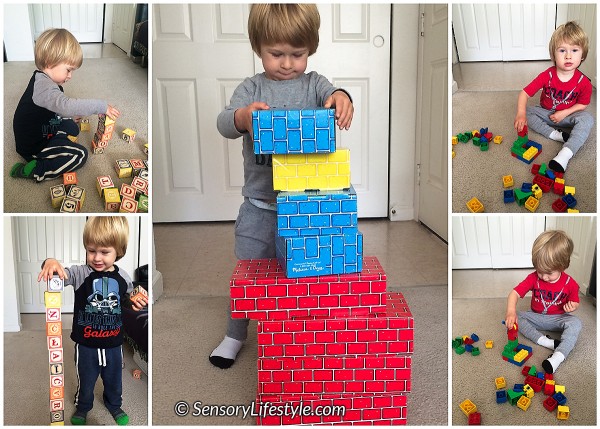
| Skills Developed | Targeted Senses |
|---|---|
| Fine motor skills, hand eye coordination & bilateral integration skills | Tactile & visual skills |
How to Play
I love blocks as they build many great skills. As your toddler gets more confident they can start working on their creativity by exploring beyond a tall tower. However lets not get too far ahead of ourselves. First lets build their foundational skills. Depending how much experience your toddler has with blocks you can first demonstrate stacking blocks and knocking it down afterwards.
It’s easier to start with larger blocks. Then move to smaller ones. You can also provide some variety by interchanging between different blocks. These days there are plenty of options. Your toddler can play with wooden blocks, foam blocks, cardboard blocks, building bricks etc.
10. Stomp painting
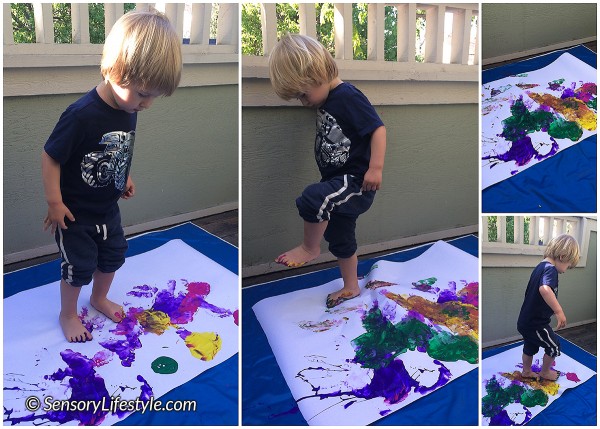
| Skills Developed | Targeted Senses |
|---|---|
| Balance, motor planning (ability to conceptualize, plan and carry out an unfamiliar task) & visual skills | Tactile, visual & proprioceptive senses |
How to Play
This activity is lots of fun, but it can get a little messy. I would recommend doing it either outside or staying away from carpeted areas.
Simply place a long strip of paper on the floor (I used banner paper) with paint blobs on the corners. I avoided paper plates for paint placement as they can get stuck to the feet which makes the activity more messy and slippery. NOTE: Make sure your toddler doesn’t have too much paint on their feet to avoid slipping.
Then let your toddler stomp away creating a master piece.
Summary
There you have it. My top 10 Sensory Activities for your 21 month old toddler. These are bound to spark up other ideas. Let me know what activities you have tried in the comments section below.
Remember: Each toddler develops at their own pace. If your child is not ready or not interested in this month’s activities, just try them again in a few weeks.
~ Urszula
Disclaimer: The activities in this blog are intended for sensory play. They are not a replacement for treatment of children with Sensory Processing Disorder, are not medical advice and should not be used in place of the care of a medical doctor or other qualified healthcare professional. These activities should be facilitated and supervised by an adult. All activities are to be performed at your own risk and in no event shall Sensory Lifestyle be liable for any damages.
| ❮ 20 month activities | 22 month activities ❯ |
